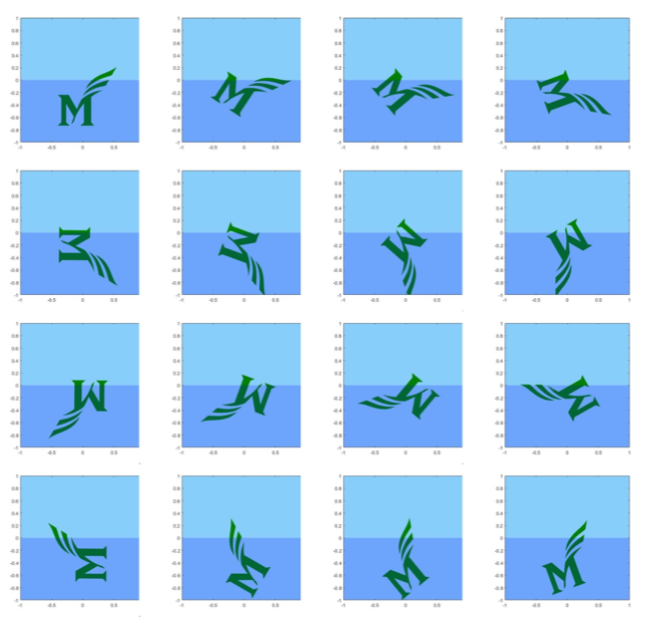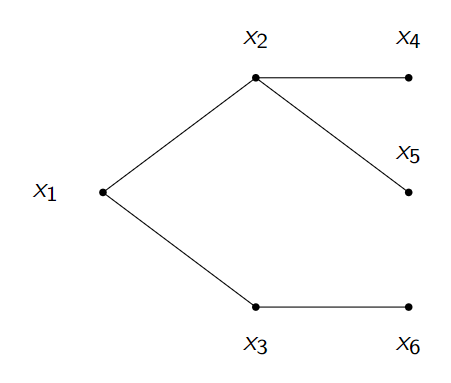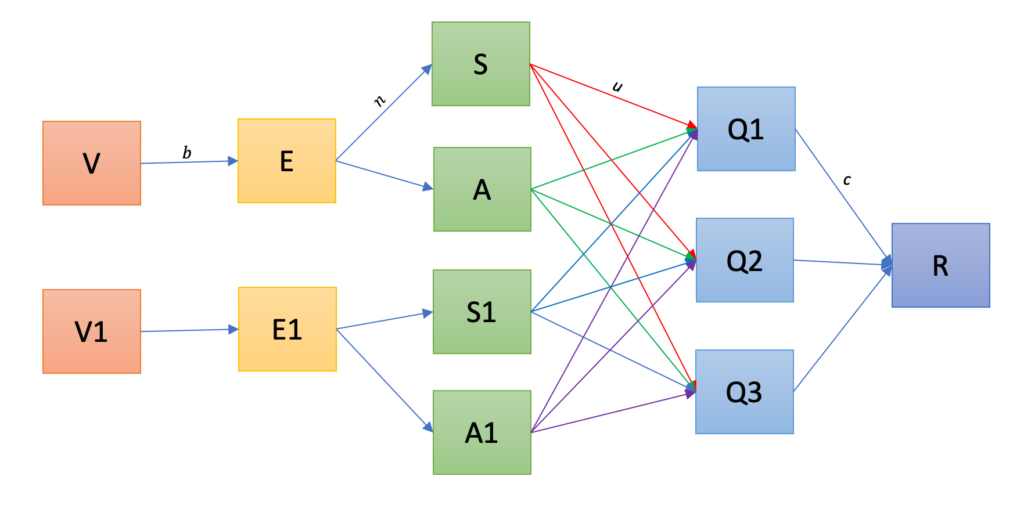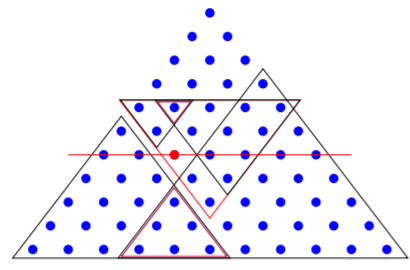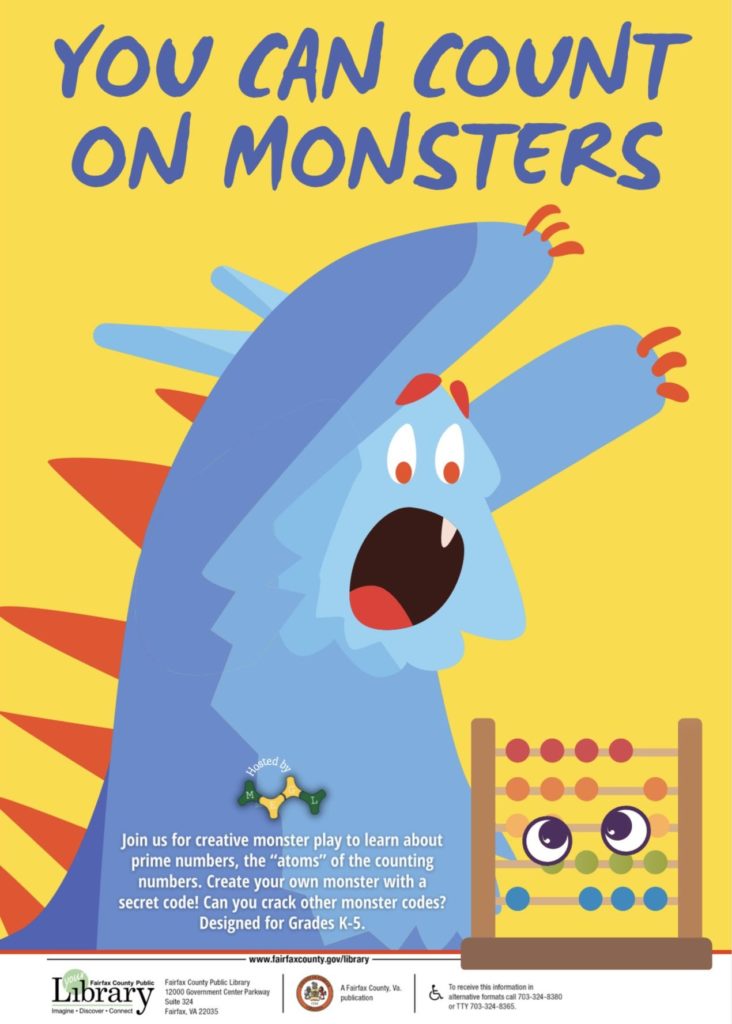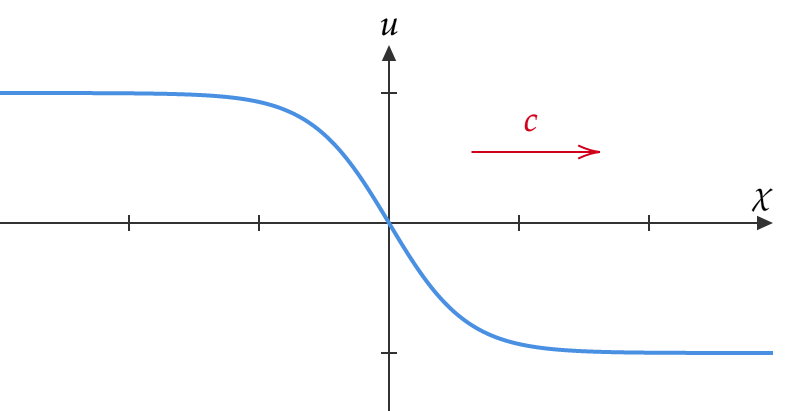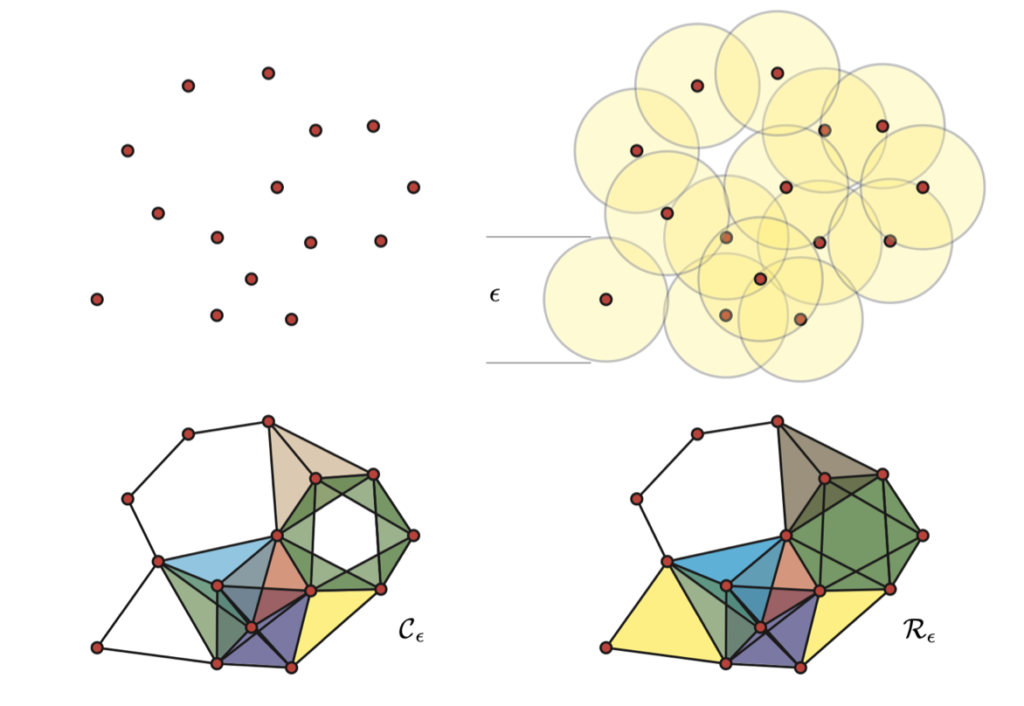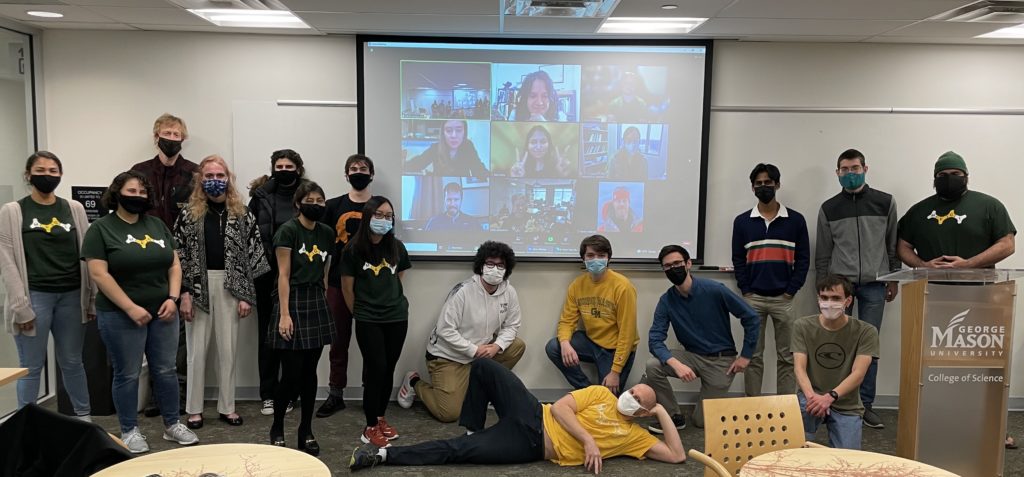
During Fall 2021 MEGL ran a 4 project program along with aiding 3 honor thesis projects with 23 participants (faculty, graduate, and undergraduate students). The four research/visualization groups are titled:
- The stability of icebergs and other floating objects
- Cores and hulls of ideals of commutative rings
- Mathematical modeling, analysis and control for understanding the spread of infectious diseases
- Combinatorics of cohomology rings of Peterson varieties
The three honor thesis projects are titled:
- Speed and stability of traveling waves in population growth models
- Persistent homology
- Vertex algebras
In addition to these projects, MEGL ran a public engagement group which we refer to below as Outreach.
The research/visualization groups engaged in experimental explorations involving faculty, graduate students, and undergraduates. Teams met weekly to conduct experiments generating data, to make conjectures from data, and to work on theory resulting from conjectures. The outreach group involved faculty, graduate students, and undergraduates to develop and implement activities for elementary and high school students that were presented at local schools and public libraries.
We concluded with an end of term symposium and a poster session, sharing progress and results of our research. To learn more, see below:

